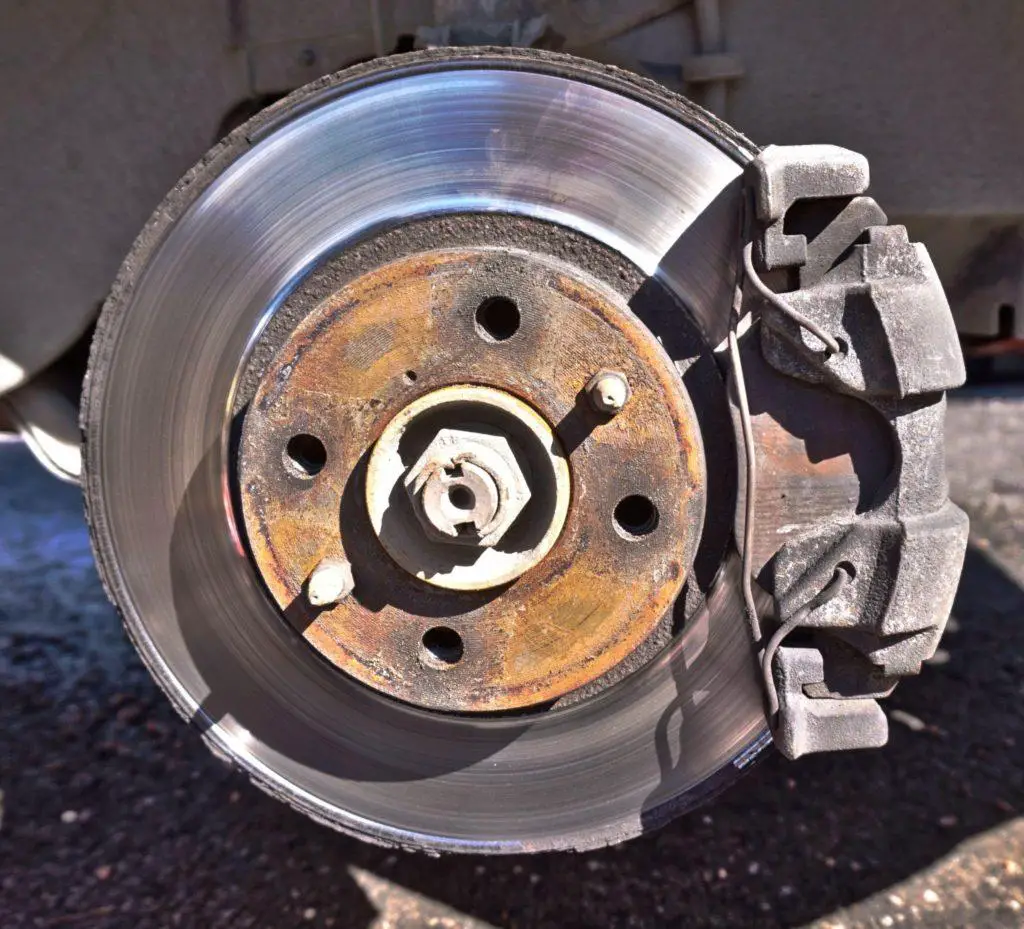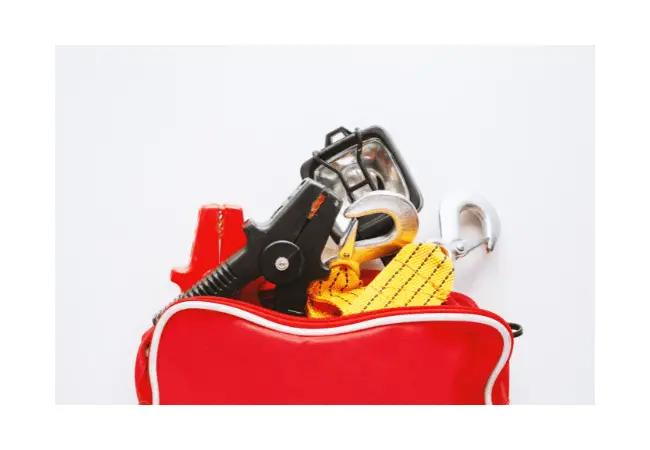Are you ready for your next great adventure? There’s nothing quite like the excitement of hitting the open road. But before you set off, it’s vital to ensure your vehicle is in tip-top shape for the journey ahead. A well-prepared car can make all the difference between a memorable trip and a stressful ordeal. Let’s dive in and explore the essential aspects of a “vehicle checklist before road trip” to prepare your vehicle for a safe and enjoyable journey.

Jump To
Short Summary
- Get your car ready for an exciting road trip with a thorough tire inspection and maintenance.
- Prepare your vehicle with essential fluid checks, brake system assessment, filters & belt inspections, and lighting & visibility checkups.
- Be prepared for the unexpected by packing an emergency kit and getting roadside assistance.
Tire Inspection and Maintenance
Tires are the unsung heroes of road trips, providing the crucial connection between your car and the road. Ensuring they are in good condition can greatly improve safety, fuel efficiency, and ride quality. So, before you embark on your adventure, it’s vital to give your tires a thorough inspection and perform any necessary maintenance.
Let’s start by looking at tire pressure, tread depth, and rotation.
Tire Pressure
Tire pressure plays a critical role in your vehicle’s performance and safety. Overinflated tires can lead to a bumpier ride, while underinflated tires waste fuel and cause uneven wear.
So, how do you ensure that your tires are properly inflated? First, locate the recommended tire pressure on a sticker found on the driver’s side door jamb. Then use a tire gauge to check each tire’s pressure, adjusting it as needed.
It’s a good idea to check your tire pressure every 1,000 miles during your trip. Remember, it’s always better to be safe than sorry because the wrong air pressure with cause makes your ride quality worse.
Tire Tread Depth
Next up is the tire tread, which provides traction and keeps you safe on the road. A simple yet effective way to check your tire tread depth is the penny test. Insert a penny into the tire groove. Make sure Abraham Lincoln’s head is facing into the groove. If the top of Lincoln’s head is visible, it’s time for new tires.
Ensuring your tires have sufficient tread can prevent accidents and improve your vehicle’s handling.
Tire Rotation
Rotating your tires is a crucial maintenance task that helps ensure even wear and extends their lifespan. Regular tire rotation is recommended every 5,000 to 8,000 miles in the owner’s manual.
If you haven’t rotated your tires recently, consider doing so before your road trip to maximize their performance and longevity.
Essential Fluids Check
A well-maintained vehicle relies on various fluids to keep it running smoothly. Before your road trip, it’s a good idea to check the levels of essential fluids such as motor oil, coolant, power steering fluid, transmission fluid, and brake fluid. Ensuring these fluids are topped off or replaced if necessary can prevent car trouble on the road and keep your car in peak condition for your long trip.
Let’s take a closer look at each of these essential fluids.
Engine Oil
Engine oil is the lifeblood of your vehicle, lubricating its engine and keeping it running smoothly. Check your engine oil level and its condition, making sure it’s not black, gritty, or below the minimum fill line.
Ideally, you should change your motor oil every 7,500 to 10,000 miles. If it’s nearing time for an oil change, consider getting it done before hitting the road. Check your owner’s manual for the exact recommended service interval.
Coolant
Coolant, also known as antifreeze, plays a vital role in keeping your engine from overheating by extracting heat and dissipating it through the radiator. Inspect your radiator fluid level and top it off if necessary.
Remember, the coolant system should be flushed at least every 40,000 to 50,000 miles.
Brake Fluid
Brake fluid is essential for a safe and responsive braking system. Check the brake fluid level in the reservoir, ensuring it’s near the “high” marking but not overfilled.
If the level is too low, it may indicate a brake leak, so be sure to address any issues before your trip.
Brake System Assessment

An efficient and reliable braking system is critical for road trip safety. Assessing your brake system involves checking the brake pads, rotors, and lines/hoses for wear and tear. If any of these components need replacing, don’t hesitate to do so before your trip.
After all, stopping is just as important as going, especially when cruising at highway speeds.
Brake Pads
Brake pads play a crucial role in your vehicle’s stopping power. Ideally, they should be between six and eight millimeters thick for optimal performance.
If your brake pads are worn down to 3mm or 1/8 inch, it’s highly recommended to replace them.
Brake Rotors
Brake rotors provide the friction needed to slow down and stop your vehicle. To measure brake rotor thickness, follow the recommended procedure found in your vehicle’s owner’s manual.
Replace your brake rotors if their thickness is less than the minimum specification.
Brake Lines and Hoses
Inspect your brake lines and hoses for any cracks, leaks, or other damages. If you discover any issues, replace them to ensure a safe and responsive braking system.
Remember, proper maintenance of your brake lines and hoses can prevent more significant issues down the road.
Be sure to check the operation of your brake lights and tail lights – replace any burned-out bulbs.
Filters and Belts Inspection
Filters and belts play a vital role in your vehicle’s performance and efficiency. Inspecting your air filter, cabin filter, and serpentine/timing belts for wear and tear can help ensure a smooth road trip.
Let’s dive into each of these components and their importance.
Air Filter
A clean air filter is essential for preventing dust, debris, and bugs from entering your engine and interior. Check air filters for wear and tear, replacing it if it hasn’t been changed recently.
A well-maintained air filter can improve engine performance, fuel economy, and interior air quality.
Cabin Filter
The cabin filter keeps the air inside your vehicle clean and free of dust, pollen, and other airborne particles. Inspect your cabin filter for wear and tear, replacing it if necessary.
A clean cabin filter can greatly enhance the comfort and air quality inside your vehicle and the efficiency of your air conditioning.
Serpentine and Timing Belts
Serpentine and timing belts are crucial components of your vehicle’s engine system. Inspect these belts for any signs of wear, such as glazing or cracking. Replace any damaged belts to prevent potential issues on the road and ensure optimal engine performance.
Lighting and Visibility
Proper lighting and visibility are essential for a safe road trip. Before setting off, ensure your headlights, taillights, and turn signals are in perfect working condition.
Additionally, replace worn windshield wipers and fill up your windshield washer fluid to guarantee clear visibility during your journey.
Headlights, Taillights, and Turn Signals
The ideal condition for headlights, taillights, and turn signals is bright, clear, and visible from at least 500 feet away. If any of these lights are burned out or hazy, replace or clean them to enhance visibility and safety on the road.
Windshield Wipers and Fluid
Functional windshield wipers and sufficient washer fluid are crucial for maintaining clear visibility during your road trip. Test your wiper blades and replace them if they leave streaks or miss spots on the windshield.
Additionally, adding windshield washer fluid and formulated specifically for windshield cleaning.
Emergency Preparedness

Emergencies can happen during road trips, so it’s essential to be prepared for the unexpected. Packing an emergency kit and considering roadside assistance for long trips can provide peace of mind and help you handle any unforeseen situations with ease.
Emergency Kit
An emergency kit is a crucial component of road trip preparedness. It should contain essentials like a spare tire, tire iron, jack, flashlight, first-aid supplies, non-perishable food, water, and a fire extinguisher.
Having an emergency kit in your car can make a significant difference in handling any unexpected situations and keeping you and your passengers safe.
Roadside Assistance
Roadside assistance is a valuable service that can provide emergency help during unforeseen events, such as breakdowns or accidents. Services like towing, fuel delivery, flat tire changes, lockout assistance, and battery jump-starts can be a lifesaver during a road trip.
Consider enrolling in a roadside assistance program for added peace of mind and security on your journey.
Summary of Vehicle Checklist Before Road Trip
Preparing your vehicle for a road trip is essential for a safe and enjoyable journey. By thoroughly inspecting and maintaining your tires, checking essential fluids, assessing your brake system, inspecting filters and belts, ensuring proper lighting and visibility, and preparing for emergencies, you can confidently hit the road knowing your car is in tip-top shape. Don’t let car troubles spoil your adventure; follow this comprehensive checklist and make unforgettable memories on your upcoming road trip.
Frequently Asked Questions
What should I check on my car before a long road trip?
Make sure your car is ready to hit the road with this pre-road trip checklist. Be sure to check tires for wear and tear, top-off fluids, and test electrical equipment before starting out.
Don’t forget to inspect belts and hoses, verify lights are working, and check the brakes too. Get on the road with peace of mind knowing that your car is prepared for the journey.
How do I prepare for a long car road trip?
To prepare for a long car road trip, it’s important to get plenty of rest before your drive, pack healthy snacks and drinking water, plan where you’ll make rest stops, chew gum to stay awake, use energizing scents, keep a good posture while driving, and find ways to keep passengers entertained.
These strategies can help make the journey more enjoyable and safe. Make sure to take regular breaks to stretch your legs and get some fresh air. Bring along a few books, games, or other activities to keep everyone entertained. Bring a map or GPS to help you navigate and plan your route. Finally, make sure to check the weather before you leave and plan accordingly.
What are 3 things you must always have in the car when driving?
Driving is made easier when you are prepared. Make sure you have your driver’s license, car registration, and proof of insurance in the car before you hit the road. These three items should always be on hand if you want to avoid being caught off guard and delayed by unexpected circumstances.
Stay safe and keep these items nearby!
Can you drive 16 hours straight?
No, it’s not safe to drive for 16 hours straight. To stay safe on the road, it’s best to limit driving to no more than 8 hours per day and take frequent breaks every two hours to keep alert.
This means you can safely reach your destination in two days or less!
